“A History of the World in 100 Objects” was a joint project of BBC Radio 4 and the British Museum, comprising a 100-part radio series written and presented by British Museum director Neil MacGregor. In 15-minute presentations broadcast on weekdays on Radio 4, MacGregor used objects of ancient art, industry, technology and arms, all of which are in the British Museum’s collections, as an introduction to parts of human history. The series began in January 2010 and was broadcast over 20 weeks. Several of the objects had Buddhist significance, which we’d like to share here on the blog.
This head of the Buddha (object number 59) originally comes from a statue in Borobudur in Java. Borobudur is one of the largest Buddhist monuments in the world, containing around 500 statues of the Buddha. The monument was built between AD 780 and 840 to resemble a mandala – a wheel-shaped symbol of Diamond Way (Skt. Vajrayana) cosmology. What is particularly interesting is that it shows clear evidence of the existence of Diamond Way Buddhism in the Indonesian islands of Java and Sumatra before 700 CE, predating the eighth century first wave of the “Ancient Translation School” (Tib. Nyingma) in Tibet and the Himalayan region. In Indonesia it was referred to as Mantranaya, and this is also evident in the oldest extant Javanese Buddhist literature.
In the Radio 4 programme, British Buddhist teacher and writer Stephen Batchelor says:
“When you are at Borobudur, you are standing on this great monument. You can see the entire world around you, beneath you – it’s an enormous experience of spaciousness, of freedom, and a far vaster perspective.”
In the programme Neil MacGregor states:
Dominating a volcanic plane in the middle of Java, Borobudur is a stepped pyramid, made from over one and a half million blocks of stone. Built around the year 800, it’s conceived as seven mounting terraces getting smaller as they rise: four square terraces below, then three circular ones above – and at the top of the whole structure is a large domed shrine…
…The monument, or stupa, is decorated with well over a thousand stone relief carvings, and peopled with hundreds of statues of the Buddha. Borobudur is without question one of the great cultural achievements of humanity.
But when Islam became the dominant religion in Java in the sixteenth century, Buddhist Borobudur was abandoned, and for centuries it lay overgrown and almost invisible. Three hundred years later, in 1814, it was rediscovered by the first modern visitor to describe it, the British administrator, scholar and soldier Sir Stamford Raffles. Raffles had been appointed lieutenant governor of Java after the British captured the island during the Napoleonic wars, and he became passionate about the people and their past. He heard about a “hill of statues” and he ordered a team to go to investigate. The news they brought back was so exciting that Raffles went to see for himself the monument which he at that stage knew as Boro Boro:
“Boro Boro is admirable as a majestic work of art. The great extent of the masses of building, covered in some parts with the luxuriant vegetation of the climate, the beauty and delicate execution of the separate portions, the symmetry and regularity of the whole. The great number and interesting character of the statues and reliefs, with which they are ornamented, excite our wonder that they were not earlier examined, sketched and described.”
But the monument had been badly damaged by earthquakes, and had been largely buried under volcanic ash. Even today many stone fragments stand in rows around the site, surrounded by grass and flowers. Nevertheless, Raffles was enraptured. He knew at once that this was a supreme architectural and cultural achievement, and he collected two of the fallen stone heads of the Buddha.
In the radio programme Stephen Batchelor continues:
“It clearly was a very grandiose equivalent to one of those great Gothic European cathedrals, and it would have taken probably 75 to 100 years to construct it, similar to the cathedrals here in Europe. And so it’s a great symbol of the Buddhist world, the Buddhist vision, and it’s an intellectual exercise at some level. But because it is so brutally physical, it is so concrete, it is more than that. It somehow embodies something, in a way, that goes beyond just metaphysics or religious doctrine, and stands for something very vital about what the human spirit can achieve.”
Neil MacGregor concludes:
The experience of climbing the terraces of Borobudur is a powerful one. As you emerge from the enclosed corridors of the lower terraces, into the clear open spaces above, surrounded only by a circle of volcanoes, you are very conscious of having entered a different world. Even the most hardened tourist has the sense that this is not a site visit, but a pilgrim’s progress. The builders of Borobudur understood perfectly how stone can shape thought.
Listen to the recording of the radio programme here.
Read the transcript here.
Other posts which may be of interest :
Tags: BBC, Borobudur, British Museum, Buddha head, Islam, Java, Stamford Raffles, Stephen Batchelor

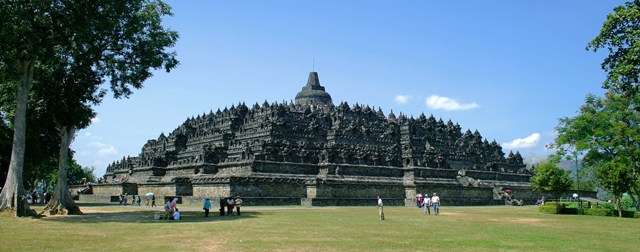
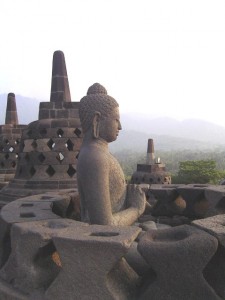

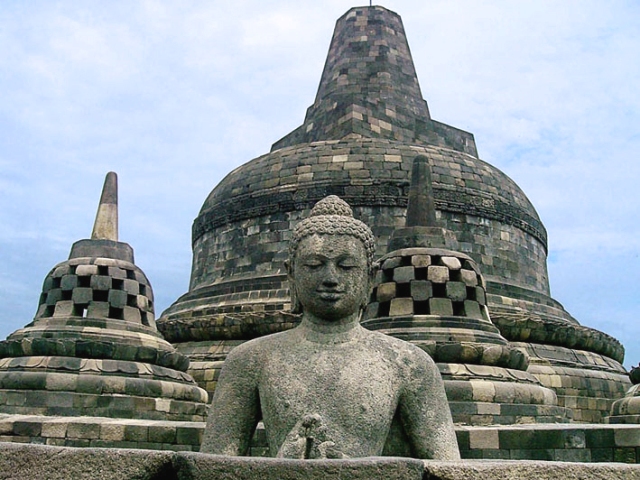
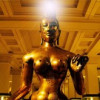
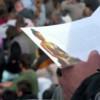
 Follow
Follow
Fascinating! Now I want to go there.